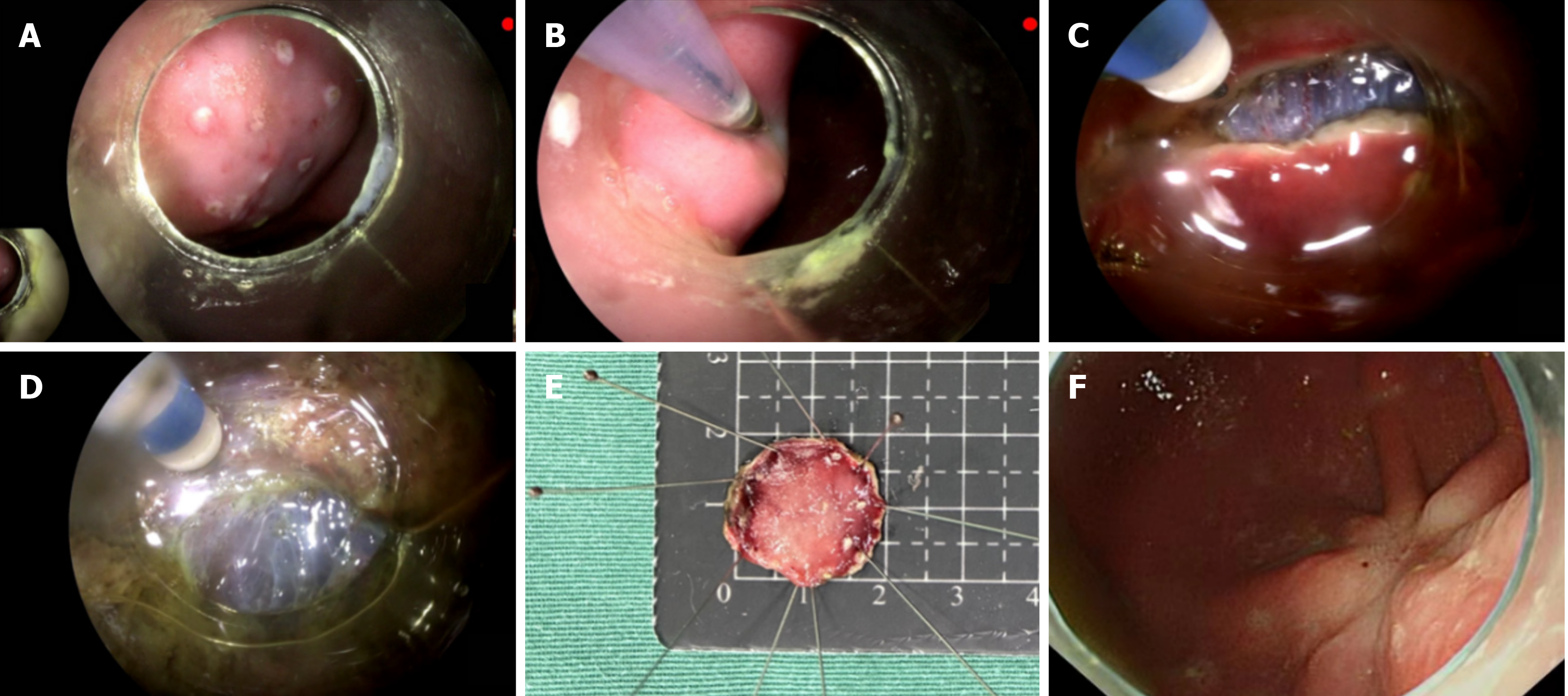Copyright
©The Author(s) 2025.
World J Gastrointest Surg. Jul 27, 2025; 17(7): 105503
Published online Jul 27, 2025. doi: 10.4240/wjgs.v17.i7.105503
Published online Jul 27, 2025. doi: 10.4240/wjgs.v17.i7.105503
Figure 3 Endoscopic submucosal dissection was performed with the portable disposable large-channel gastroscope.
A: Marking: Marking is the first step in endoscopic submucosal dissection (ESD). It is used to demarcate the boundary of the lesion clearly. This is crucial as it determines the resection margin and ensures complete removal of the lesion. The accurate marking ability of the portable disposable large-channel endoscope system is essential for successful ESD; B: Lifting: Lifting the lesion through submucosal injection is a key step. It separates the lesion from the deeper layers of the digestive tract, making it easier to resect and reducing the risk of perforation. The endoscope's ability to assist in precise lifting is important for the safety and effectiveness of the procedure; C: Circumferential resection: This step involves cutting around the marked lesion. A clear view provided by the endoscope is necessary to ensure a complete and accurate circumferential resection, which is vital for the en-bloc resection of the lesion; D: Dissection: During dissection, the lesion is carefully separated from the underlying tissues. The high-quality image and maneuverability of the portable disposable large-channel endoscope system enable the endoscopist to perform this delicate operation with precision, minimizing the risk of damage to surrounding tissues; E: Specimen: The removed specimen is an important outcome of ESD. The size and integrity of the specimen are used to evaluate the success of the resection and for pathological examination; F: Healing wound: After the ESD procedure, observing the healing wound is crucial. The endoscope can be used to monitor the wound for any signs of bleeding, infection, or improper healing. The clear image quality of the portable disposable large-channel endoscope system helps in accurate wound assessment.
- Citation: Zhao CY, Ning B, Feng XX, Li HK, Zhang WG, Dong H, Chai NL, Linghu EQ. Comparison of a portable disposable large-channel gastroscope and a conventional reusable gastroscope in gastric endoscopic submucosal dissection. World J Gastrointest Surg 2025; 17(7): 105503
- URL: https://www.wjgnet.com/1948-9366/full/v17/i7/105503.htm
- DOI: https://dx.doi.org/10.4240/wjgs.v17.i7.105503









